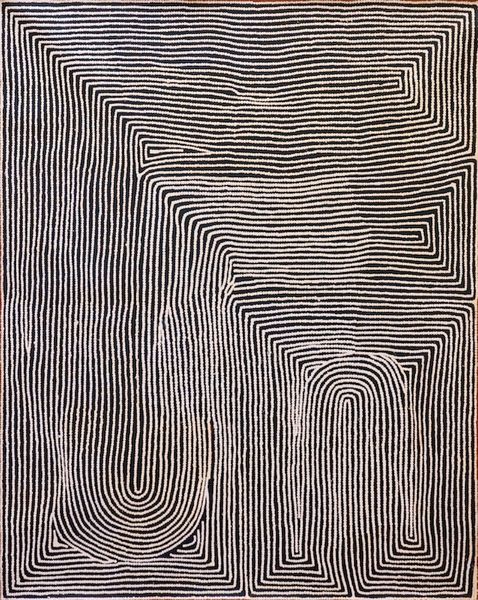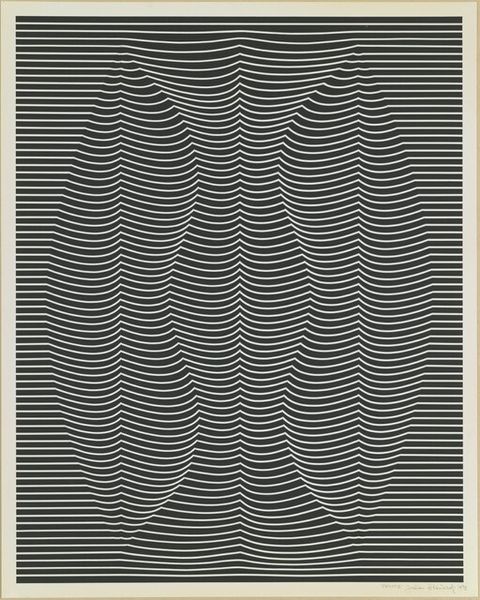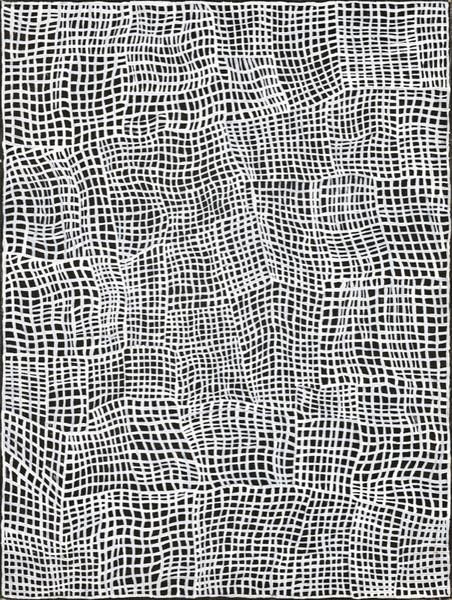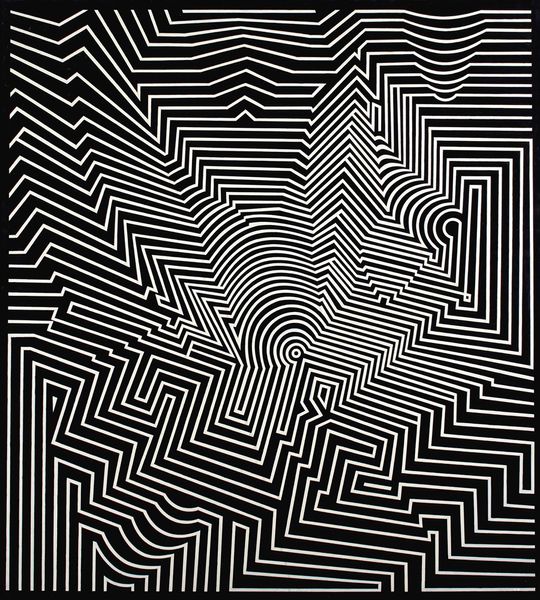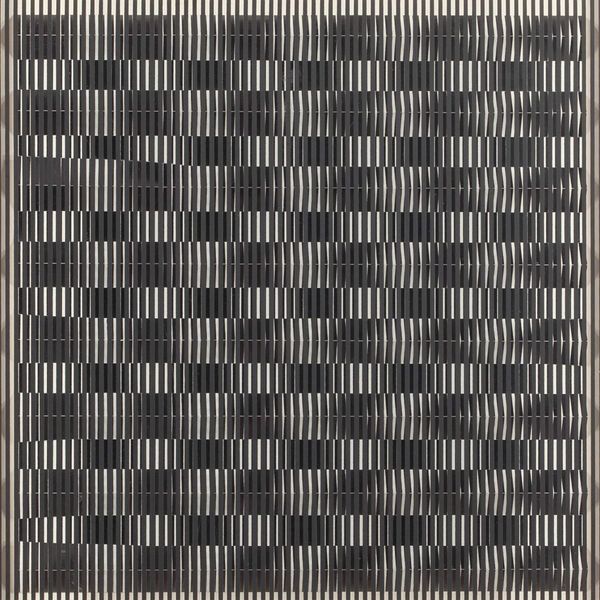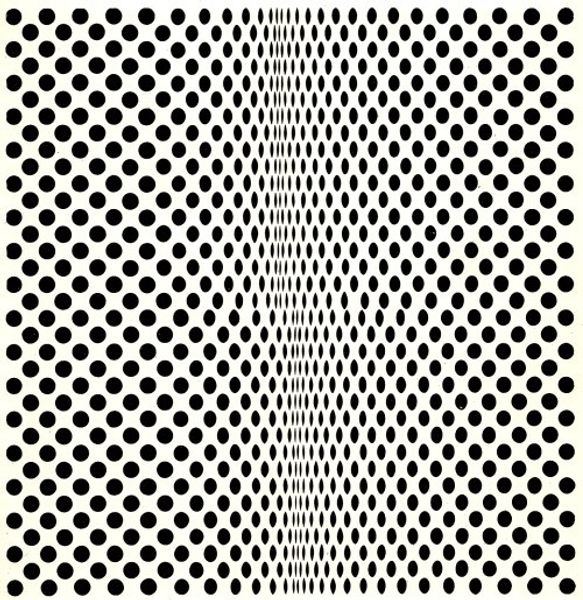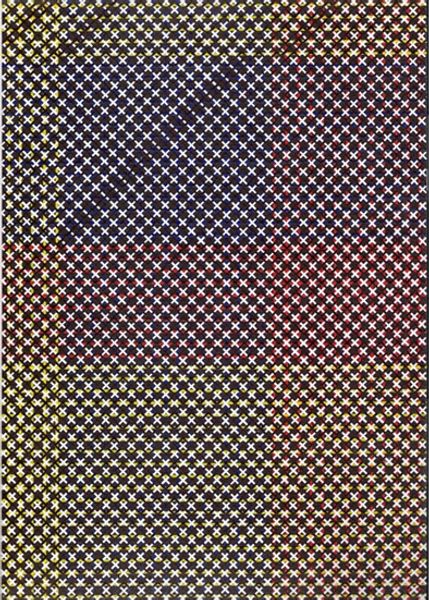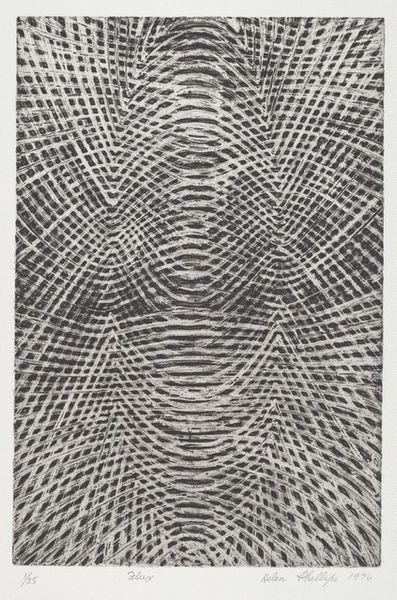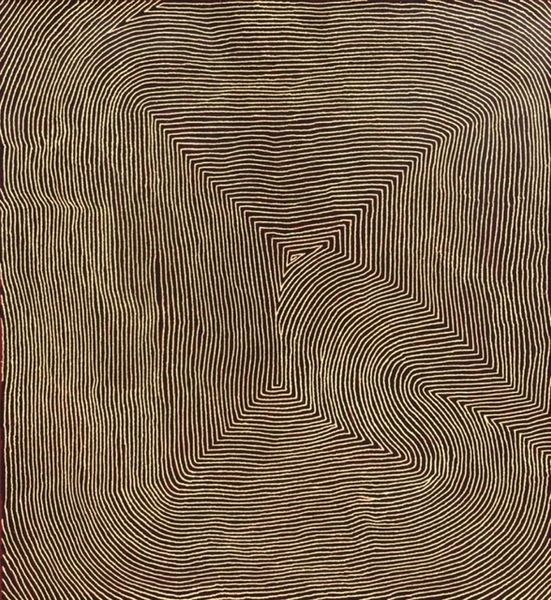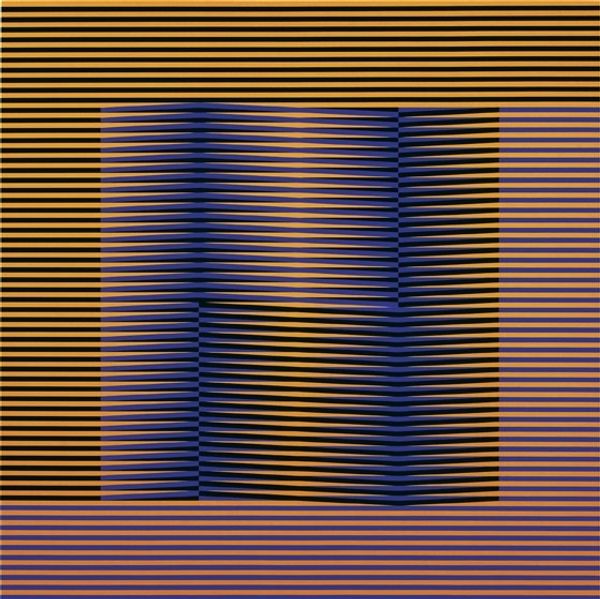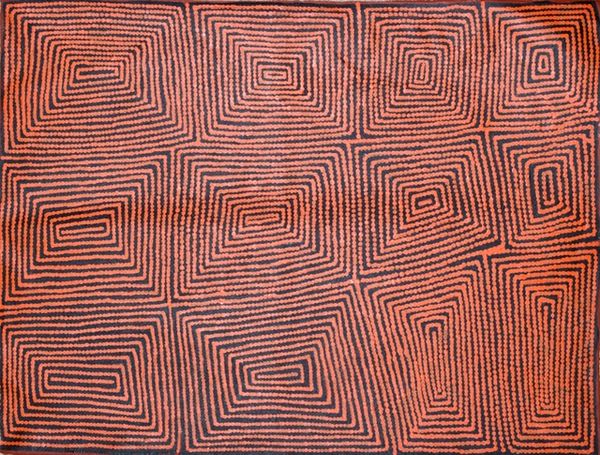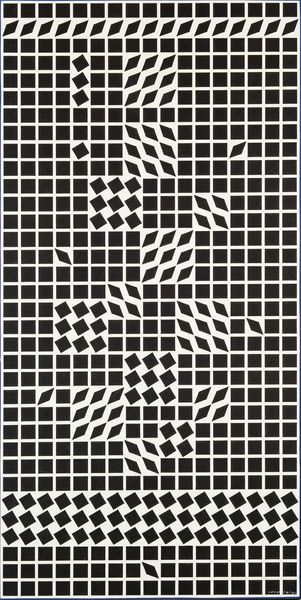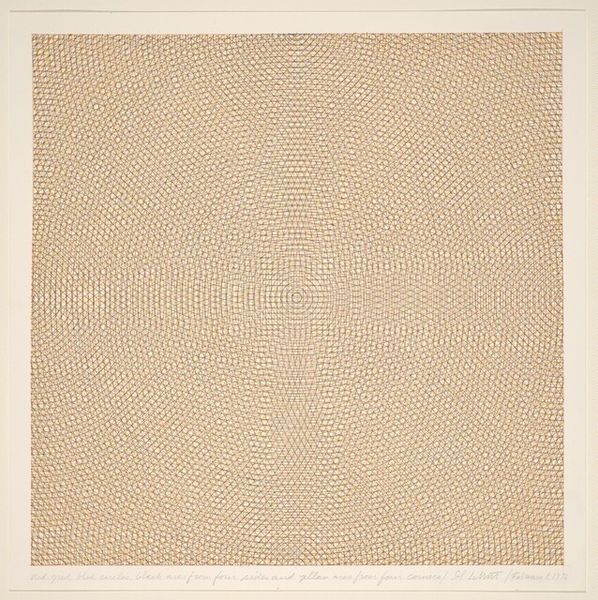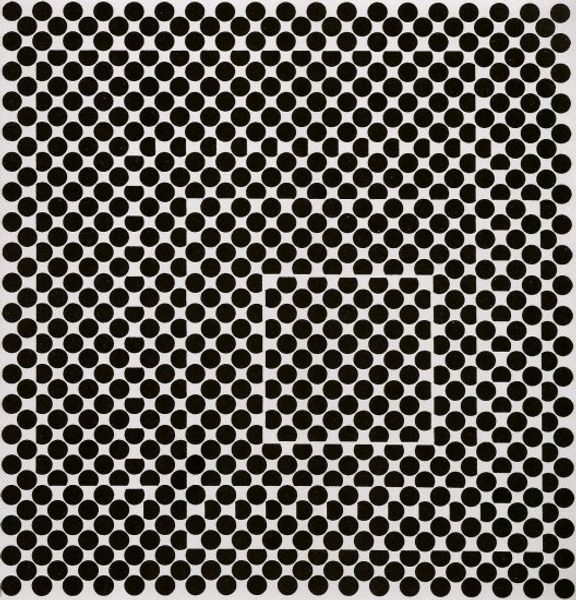
painting, acrylic-paint
#
natural stone pattern
#
painting
#
acrylic-paint
#
geometric pattern
#
abstract pattern
#
organic pattern
#
geometric
#
geometric-abstraction
#
repetition of pattern
#
vertical pattern
#
abstraction
#
intricate pattern
#
line
#
pattern repetition
#
layered pattern
#
combined pattern
Copyright: Warlimpirrnga Tjapaltjarri,Fair Use
Curator: Warlimpirrnga Tjapaltjarri’s "Mamultjulkulnga," created in 2005 with acrylic paint, immediately strikes the eye with its intense geometry. What is your initial take? Editor: The vertical black lines on the cream-colored surface pulse rhythmically. The concentration of nested rectangles makes the work hypnotic; there's a stark tension in the stark simplicity of line and form. Curator: The artist comes from a background profoundly connected to the land. This particular piece depicts the artist's country west of Lake Mackay. What reads to us as a collection of repeated forms on the surface represents sacred geography. Editor: Right, it's important to look at the socio-political backdrop against which this piece was made. The artist, one of the last members of his community to come into contact with Western society, depicts in “Mamultjulkulnga" the cultural dislocation, the drama of survival experienced by the Pintupi people of the Gibson Desert. I mean, can we look at it as a document of resistance? Curator: Absolutely. Think about the laborious process of producing art, its intrinsic value that contrasts so pointedly with mass-produced, disposable goods so glorified in modern culture. Also, note how seemingly minimal gestures can speak volumes, subverting dominant cultural norms. The artist uses available materials—paint and canvas—to carry on ancient stories. Editor: The layering of these nested forms reminds me of maze, so does this imply journey or obstacle? In any case, there is a feeling of constraint from that concentration of form in the middle. We should read this as both cultural assertion and criticism of colonialism's disrupting impact on Indigenous lifeways. Curator: Looking closely at the craftsmanship and choice of commercial material gives us access to understanding how traditions adapt to shifting landscapes. Editor: Reflecting on “Mamultjulkulnga” then becomes not only a celebration of Warlimpirrnga's talent and artistic contributions but a poignant meditation on issues of displacement and preservation in modern and contemporary contexts. Curator: This dialogue serves as an interesting lens through which we see artistic creation intertwined within culture and larger networks of material production, revealing an inherent thread of survival.
Comments
No comments
Be the first to comment and join the conversation on the ultimate creative platform.
